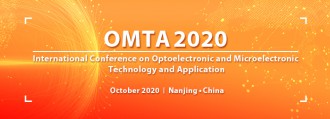
OMTA 2020
 活动说明
活动说明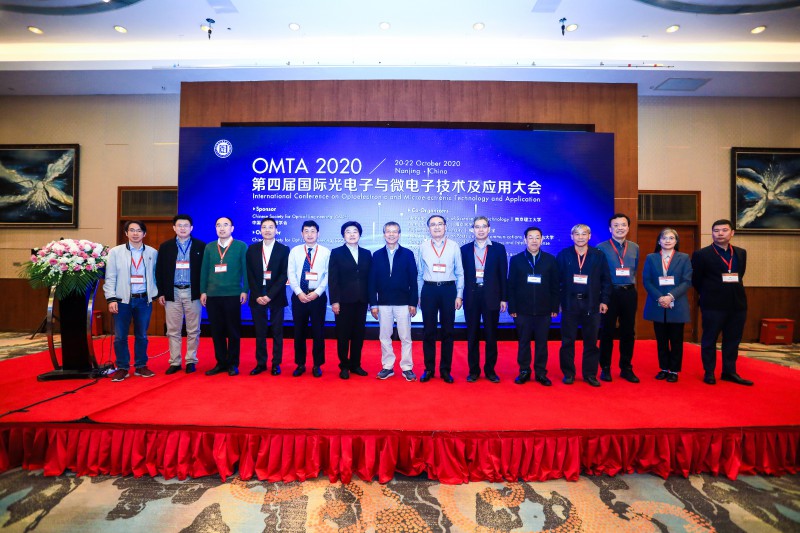
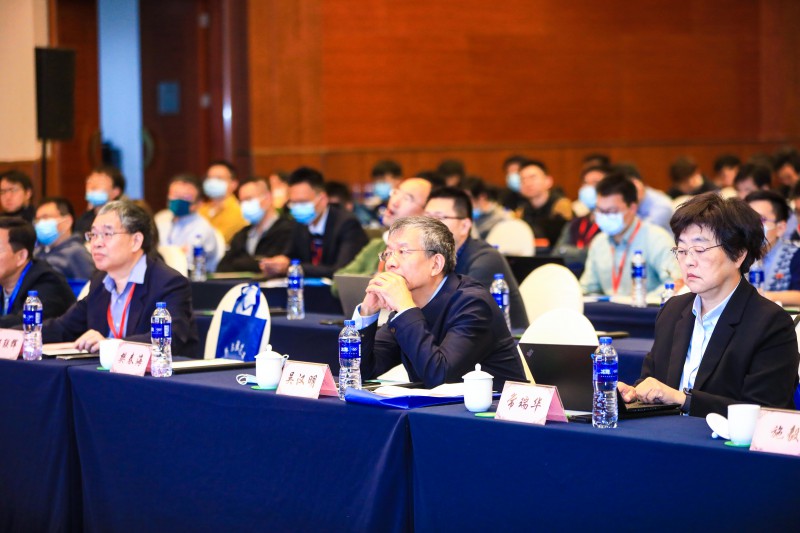

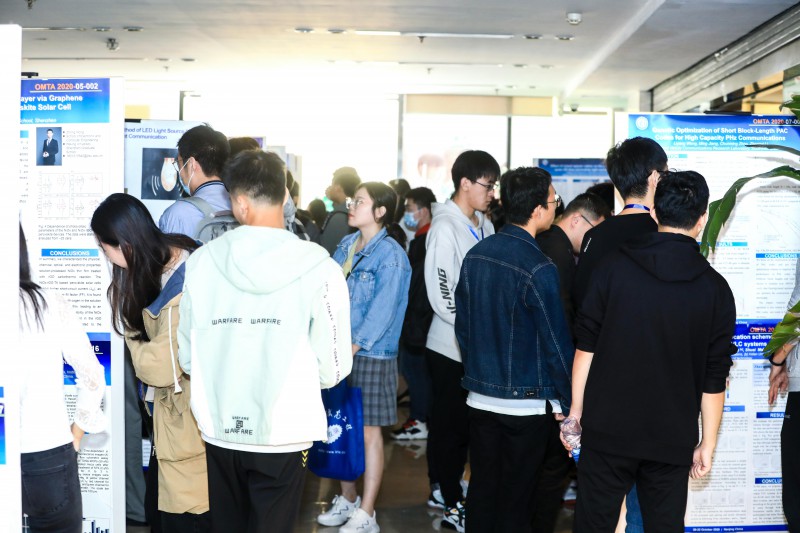
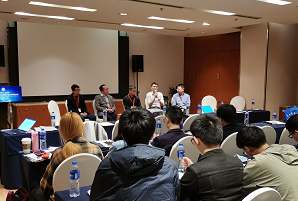
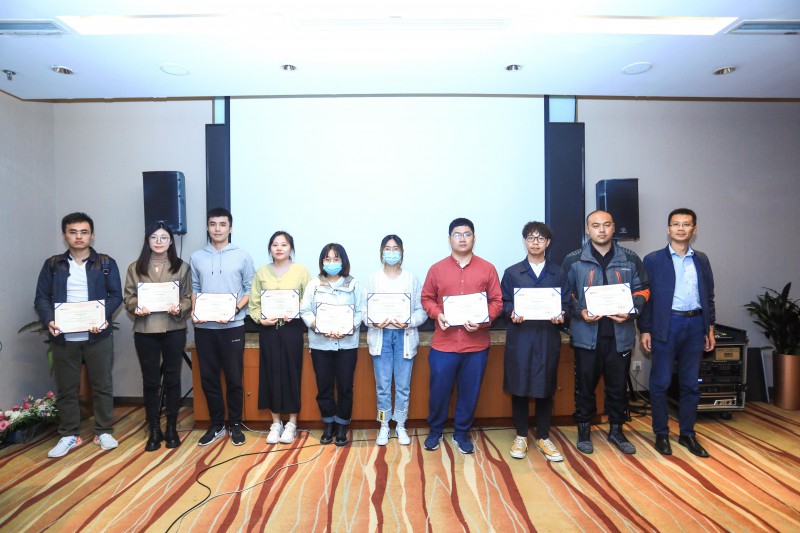

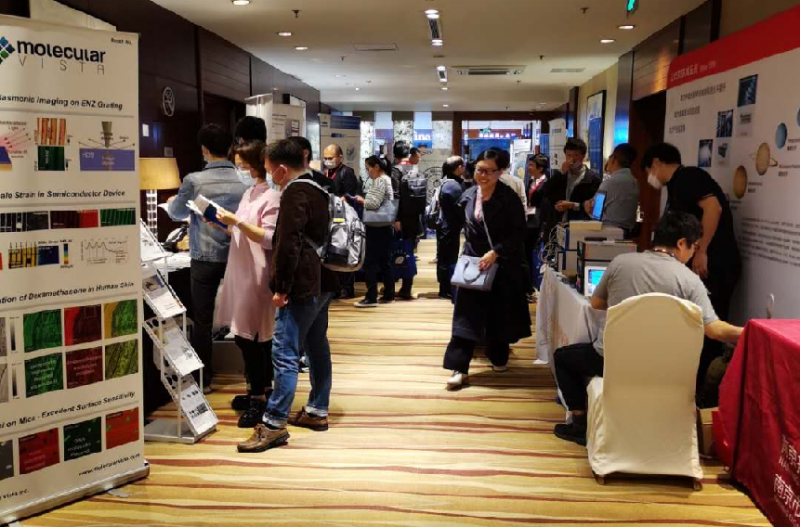
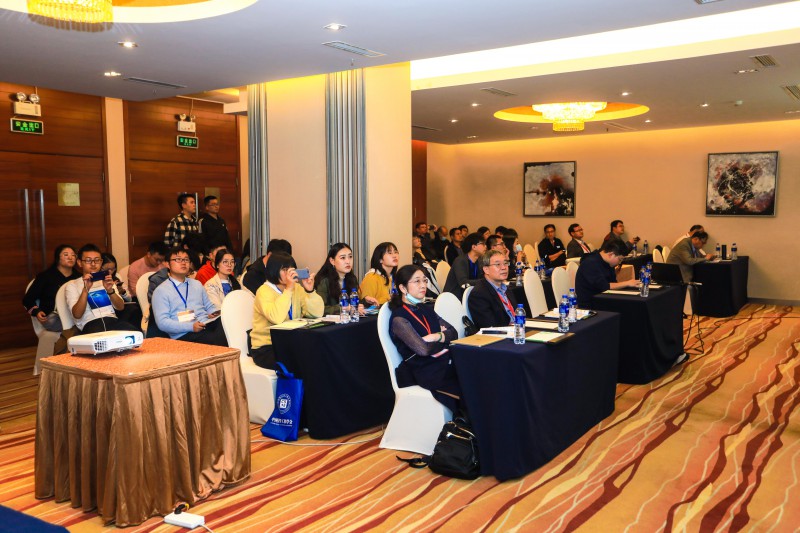
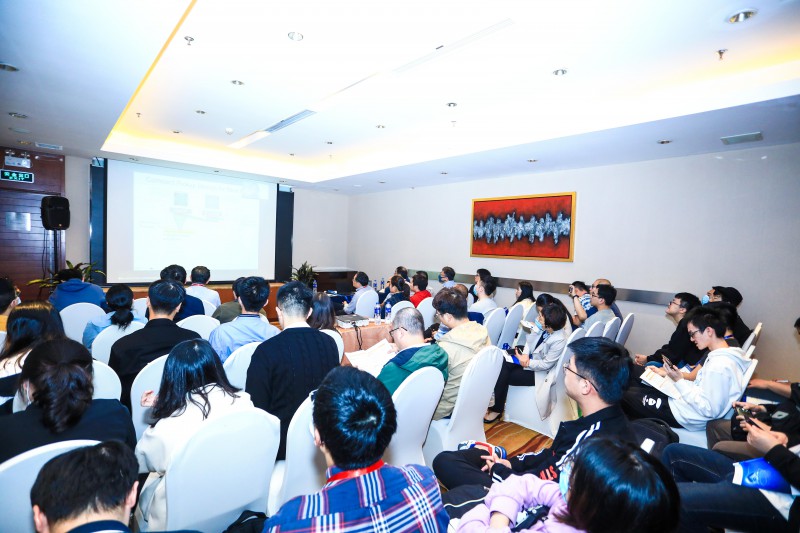
Welcome
Optoelectronic and microelectronic technologies are very fundamental in supporting communication network, high performance computing, terminal equipments, Internet of Things, biomedical and other application areas. This conference will cover related materials, devices, chips, modules and systems in the fields of information sensing, transmission, processing, display, and storage. It aims to promote academic exchanges, as well as international scientific and technological achievements commercialization and project cooperation. It’ll provide a good platform for building a full-chain research system, and facilitate core technology innovation.
General Chairs
 |
 |
| Yueguang Lv | Wenhua Ding |
| Chinese Academy of Engineering, China | Chinese Academy of Engineering, China |
 |
 |
| Yue Hao | Hanming Wu |
| Xidian University, China | EtownIP Microelectronics Co., Ltd., China |
 |
 |
| Tiejun Cui | C. J. Chang-Hasnain |
| Southeast University, China | UC Berkeley, USA |
General Co-Chairs
Yi Luo, Tsinghua University, China
Shaojun Wei, Tsinghua University, China
Qian Chen, Nanjing University of Science and Technology, China
Hui Yang, Suzhou Institute of Nano-Tech and Nano-Bionics, CAS, China
Lianhui Wang, Nanjing University of Posts and Telecommunications, China
TPC Chairs
Dapeng Chen, Institute of Microelectronics, CAS, China
Yi Shi, Nanjing University, China
TPC Co-Chair
Xiaodi Tan, Fujian Normal University, China
Coferences
Topic 1: Optical Communication
Topic 2: Advanced Sensing
Topic 3: Lighting and Display
Topic 4: Optical Storage
Topic 5: Energy Optoelectronics
Topic 6: Biophotonics and Bioelectronics
Special Symposium: Petahertz Communications and Applications
Special Symposium: Carbon based Electronic and Optoelectronic Devices
Cocurrent Activities
Workshop: AI for optics and optics for AI
Best Student Paper/Poster Award
Compact Exhibition
Collaboration Media






 组织机构
组织机构Sponsor
Chinese Society for Optical Engineering (CSOE)

Organizer
Chinese Society for Optical Engineering (CSOE)

Co-Organizers
Nanjing University of Science and Technology
Nanjing University
Fujian Normal University
Nanjing University of Posts and Telecommunications
Jiangsu Key Laboratory of Spectral Imaging and Intelligent Sense
School of Electronic Information, Hangzhou Dianzi University
Jiangsu Optical Society
Optical Society of Japan (OSJ)

General Chairs
Yueguang Lv, Chinese Academy of Engineering, China
Wenhua Ding, Chinese Academy of Engineering, China
Yue Hao, Xidian University, China
Hanming Wu, EtownIP Microelectronics Co., Ltd., China
Tiejun Cui, Southeast University, China
C. J. Chang-Hasnain, UC Berkeley, USA

General Co-Chairs
Yi Luo, Tsinghua University, China
Shaojun Wei, Tsinghua University, China
Qian Chen, Nanjing University of Science and Technology, China
Hui Yang, Suzhou Institute of Nano-Tech and Nano-Bionics, CAS, China
Lianhui Wang, Nanjing University of Posts and Telecommunications, China

Technical Program Committee
Chairs:
Dapeng Chen, Institute of Microelectronics, CAS, China
Yi Shi, Nanjing University, China Co-Chair:
Xiaodi Tan, Fujian Normal University, China

Topic 1: Optical Communication
Chairs:
Lilin Yi, Shanghai Jiao Tong University, China
Daoxin Dai, Zhejiang University, China
TPC Members:
Xinlun Cai, Sun Yat-sen University, China
Xianshu Luo, Advanced Micro Foundry Pte Ltd., Singapore
Qi Yang, Huazhong University of Science and Technology, China
Mingbin Yu, Shanghai Institute of Microsystem and Information Technology, China
Xihua Zou, Southwest Jiaotong University, China
Topic 2: Advanced Sensing
Chair:
Yuelin Wang, Shanghai Institute of Microsystem and Information Technology, China
Co-Chair:
Wei Wang, Peking University, China
TPC Members:
Zheng Cui, Suzhou Institute of Nano-Tech and Nano-Bionics, CAS, China
Jingquan Liu, Shanghai Jiao Tong University, China
Anjie Ming, GRINM Group, China
Ming Wang, Nanjing Normal University, China
Quan Wen, Chongqing University, China
Guoqiang Wu, Wuhan University, China
Huaiwang Zeng, CUMEC, China
Zaifa Zhou, Southeast University, China
Topic 3: Lighting and Display
Chair:
Xiaowei Sun, Southern University of Science and Technology, China
Shengdong Zhang, Peking University, China
TPC Members:
Lian Duan, Tsinghua University, China
Zhaojun Liu, Southern University of Science and Technology, China
Dongge Ma, Changchun Institute of Applied Chemistry, CAS, China
Jing Wu, AVIC Optronics, China
Topic 4: Optical Storage
Chairs:
Xiaodi Tan, Fujian Normal University, China
Changsheng Xie, Huazhong University of Science and Technology
Kazuo Kuroda, Utsunomiya University, Japan
TPC Members:
Ryushi Fujimura, Utsunomiya University, Japan
Zongsong Gan, Huazhong University of Science and Technology, China
Jinxin Guo, Beijing University of Technology, China
Hideyoshi Horimai, HolyMine Corporation, Japan
John Sheridan, University College Dublin, Ireland
Xiangping Li, Jinan Uinversity, China
Xiao Lin, Fujian Normal University, China
Shiuan Huei Lin, Natinal Chiao Tung University, Taiwan, China
Takanori Nomura, Wakayama University, Japan
Hao Ruan, Shanghai Insititue of Optics and Fine Mechanics, CAS, China
Tsutomu Shimura, The University of Tokyo, Japan
Yuzuru Takashima, The University of Arizona, USA
Yasuo Tomita, University of Electricity and Communication, Japan
Xuewu Xu, Data Storage Institute, Singapore
Jingyu Zhang, Huazhong University of Science and Technology, China
Yuxia Zhao, Institute of Science & Chemistry, CAS, China
Topic 5: Energy Optoelectronics
Chairs:
Yaohua Mai, Jinan University, China
Xiaodan Zhang, Nankai University, China
TPC Members:
Xiaojing Hao, The University of New South Wales, Australia
Hairen Tan, Nanjing University, China
Jiang Tang, Huazhong University of Science and Technology, China
Fei Guo, Jinan University, China
Topic 6: Biophotonics and Bioelectronics
Chair:
Lianhui Wang, Nanjing University of Posts and Telecommunications, China
TPC Members:
Chunhai Fan, Shanghai Jiao Tong University, China
Yiping Cui, Southeast University, China
Xiaochen Dong, Nanjing Tech University, China
Mingyuan Gao, Soochow University, China
Xingyu Jiang, Southern University of Science and Technology, China
Qiangbin Wang, Suzhou Institute of Nano-Tech and Nano-Bionics, CAS, China
Qiang Zhao, Nanjing University of Posts and Telecommunications, China
Junjie Zhu, Nanjing University, China
Dayong Jin, University of Technology Sydney, Australia
Xiaogang Liu, National University of Singapore, Singapore
Kanyi Pu, Nanyang Technological University, Singapore
Special Symposium: Petahertz Communications and Applications
Chairs:
Zhengyuan Xu, University of Science and Technology of China, China
Zhaocheng Wang, Tsinghua University, China
Julian Cheng, University of British Columbia, Canada
Special Symposium: Carbon based Electronic and Optoelectronic Devices
Chair:
Yi Shi, Nanjing University, China
Co-Chairs:
Xinran Wang, Nanjing University, China
Fengqiu Wang, Nanjing University, China
Workshop: AI for optics and optics for AI
Chairs:
Lilin Yi, Shanghai Jiao Tong University, China
Jianji Dong, Huazhong University of Science and Technology, China

中国光学工程学会
联办单位:
南京理工大学
南京大学
福建师范大学
南京邮电大学
江苏省光谱成像与智能感知重点实验室
杭州电子科技大学电子信息学院
江苏省光学学会
日本光学学会
大会主席:
吕跃广 院士(中国工程院)
丁文华 院士(中国工程院)
郝 跃 院士(西安电子科技大学)
吴汉明 院士(芯创智(北京)微电子有限公司)
崔铁军 院士(东南大学)
C. J. Chang-Hasnain(美国加州大学伯克利分校)
大会共主席:
罗 毅(清华大学)
魏少军(清华大学)
陈 钱(南京理工大学)
杨 辉(中科院苏州纳米技术与纳米仿生研究所)
汪联辉(南京邮电大学)
程序委员会主席:
陈大鹏(中科院微电子研究所)
施 毅(南京大学)
程序委员会共主席:
谭小地(福建师范大学)
专题一:光通信
主席:义理林(上海交通大学) 戴道锌(浙江大学)
TPC成员: 蔡鑫伦(中山大学) 郭 磊(重庆邮电大学) 罗贤树(新加坡AMF公司) 杨 奇(华中科技大学) 余明斌(中科院上海微系统与信息技术研究所) 邹喜华(西南交通大学)
专题二:先进传感
主席:王跃林(中科院上海微系统与信息技术研究所)
共主席:王 玮(北京大学)
TPC成员:崔 铮(中科院苏州纳米技术与纳米仿生研究所) 刘景全(上海交通大学) 明安杰(有研科技集团有限公司) 王 鸣(南京师范大学) 温 泉(重庆大学) 吴国强(武汉大学) 曾怀望(联合微电子中心) 周再发(东南大学)
专题三:发光与显示
主席:孙小卫(南方科技大学) 张盛东(北京大学)
TPC成员:段 炼(清华大学) 马东阁(中科院长春应用化学研究所) 刘召军(南方科技大学) 武 静(洛阳电光设备研究所)
专题四:光存储
主席:谭小地(福建师范大学) 谢长生(华中科技大学) Kazuo Kuroda (日本宇都宫大学)
TPC成员:甘棕松(华中科技大学) 郭金鑫(北京工业大学) 李向平(暨南大学) 林枭(福建师范大学) 阮昊(中科院上海光学精密机械研究所) 张静宇(华中科技大学) 赵榆霞(中科院理化技术研究所) Ryushi Fujimura( 日本宇都宫大学) Hideyoshi Horimai(日本丰桥技术科学大学) John Sheridan(爱尔兰都柏林大学) Shiuan Huei Lin(台湾国立交通大学) Takanori Nomura(日本和歌山大学) Tsutomu Shimura(日本东京大学) Yuzuru Takashima(美国亚利桑那大学) Yasuo Tomita(日本电气通信大学) Xuewu Xu(新加坡数据存储研究所)
专题五:能源光电子
主席:麦耀华(暨南大学) 张晓丹(南开大学)
TPC成员: 郝晓静(澳大利亚新南威尔士大学) 谭海仁(南京大学) 唐江(华中科技大学) 郭飞(暨南大学)
专题六:生物光子与生物电子
主席:汪联辉(南京邮电大学)
TPC成员:樊春海(上海交通大学) 崔一平(东南大学) 董晓臣(南京工业大学) 高明远(苏州大学) 蒋兴宇(南方科技大学) 王强斌(中科院苏州纳米技术与纳米仿生研究所) 赵强(南京邮电大学) 朱俊杰(南京大学) Dayong Jin(澳大利亚悉尼科技大学) Xiaogang Liu(新加坡国立大学) Kanyi Pu(新加坡南洋理工大学)
特别专题: 拍赫兹通信与应用
主席:徐正元(中国科技大学) 王昭诚(清华大学) Julian Cheng (加拿大英属哥伦比亚大学)
特别专题: 碳基电子与光电子器件
主席:施 毅(南京大学)
共主席:王欣然(南京大学) 王枫秋 (南京大学)
Workshop: AI for optics and optics for AI
主席:义理林(上海交通大学) 董建绩(华中科技大学)
 专家报告
专家报告Plenary Speakers
• Framework nucleic acids-guided single-molecule analysis, Chunhai Fan, Shanghai Jiao Tong University, China
• VCSELs for 3D Sensing and 5G Communications, C. J. Chang-Hasnain, UC Berkeley, USA
• Photonic integrated circuits for smart processing, Yoshiaki Nakano, The University of Tokyo, Japan
• Petahertz communication for 6G and beyond, Zhengyuan Xu, University of Science and Technology of China, China
• Development of laser display industry and introduction of Hisense laser TV, Weidong Liu, Hisense Co.,Ltd., China
Topic 1: Optical Communication
• Simple and compact widely-tunable laser array based on half-wave bow-tie couplers, Jianjun He, Zhejiang University, China(Keynote)
• Application of optical transmission techniques in distributed optical fiber sensing systems, Chao Lu, The Hong Kong Polytechnic University, China(Keynote)
• Large capacity on-chip mode division multiplexing devices and systems, Yikai Su, Shanghai Jiao Tong University, China(Keynote)
• DSP enabled next generation 50G TDM-PON, Borui Li, Huawei, China
• Photonics-based measurement for broadband cognitive radio, Shilong Pan, Nanjing University of Aerand Astronautics, China
• High-speed visible light communications and underwater laser wireless network, Chao Shen, SaNoor Technologies Inc., USA
• Sub-wavelength waveguide grating components for integrated optics applications, Yaocheng Shi, Zhejiang University, China
• Fiber-optic communications using versatile spatial modes, Jian Wang, Huazhong University of Science and Technology, China
• Progress toward high-performance Ge-on-Si photodetectors for optical communications, Wei Wang, Mingbin Yu, SIMIT, CAS, China
• Silicon photonic technologies beyond 800G, Xi Xiao, National Information Optoelectronics Innovation Center, China
• Theory and technology of quantum key distribution metropolitan optical networking, Yongli Zhao, Beijing University of Posts and Telecommunications, China
• Advanced probabilistic shaping for next generation optical transmission, Qunbi Zhuge, Shanghai Jiao Tong University, China
• ZrO2 material application in vehicle exhaust gas sensing system, Lei Chen, Zhejiang Rockerstone Electronics Technology Co., Ltd, China
• MEMS acoustic vector sensor, Chengchen Gao, Peking University, China
• Printed flexible strain sensor array for bendable interactive surface, Xiaojun Guo, Shanghai Jiao Tong University, China
• Application of advanced optical temperature measurement technology in Aeroengine, Defeng Liu, AVIC BMC, China
• Silicon nanomembrane based multifunctional sensors for Internet of Things applications, Yongfeng Mei, Fudan University, China
• High performance micro electric field sensor technology and its applications, Chunrong Peng, Aerospace Information Research Institute, CAS, China
• 3D scanning based on MEMS mirror, Dayong Qiao, Northwestern Polytechnical University
• Aluminum nitride piezoelectric MEMS transducers, Chengliang Sun, Wuhan University, China
• SITRI MEMS: a platform for MEMS innovation and industrialization, Shinan Wang, SITRI, China
• Micro-heater based gas sensors, Lei Xu, University of Science and Technology of China, China
• Medical diagnostic instrument based on MEMS sensor technology, Chenyang Xue, North University of China, China
• MEMS sensor and micro-system with extremely near zero power consumption, Jiahao Zhao, Tsinghua University, China
Topic 3: Lighting and Display
• Technical challenge and solution for vehicle-mounted AR-HUD mass commercial application, Wei Guo, AVIC Optronics, China
• NIR/Vis upconversion QLED based on vertical thin film transistor, Wei Lei, Southeast University, China
• AR displays without A-C conflict, Yan Li, Shanghai Jiao Tong University, China
• QLEDs : form materials, device to inkjet printing, Lei Qian, Ningbo Institute of Materials Technology and Engineering, CAS, China
• Research on photosensitive materials, optical design, imaging simulation, and device fabrication for holographic waveguide displays, Zhongwen Shen, Southeast University, China
• Oxide-based neuromorphic transistors for brain-like computation, Qing Wan, Nanjing University, China
• High resolution OLED micro display for intelligent wearable products, Jianbing Yang, CETC 55, China
• High color-purity light-emitting diodes based on quantum dots/perovskites, Xuyong Yang, Shanghai University, China
• In situ degradation of wide bandgap organic semiconductors in Organic Light-Emitting Diodes, Yongbiao Zhao, Yunnan University, China
Topic 4: Optical Storage
• Recording density evaluation in holographic data storage by using analytic pixel amplitude function, Daisuke Barada, Utsunomiya University, Japan
• Holographic data storage using polychromatic light source, Ryushi Fujimura, Utsunomiya University, Japan
• Zongsong Gan, Huazhong University of Science and Technology, China
• Nanoparticle doped photopolymers and their photokinetics for holographic data storage uses, Jinxin Guo, Beijing University of Technology, China
• Optical pickup of the hologram, by the hologram, for the hologram, Hideyoshi Horimai, HolyMine Corporation, Japan
• Optical data storage 4.0 comes of age, Xiangping Li, Jinan Uinversity, China - Optical data storage 4.0 comes of age
• Coaxial holographic memory to increase recording capacity using computer-generated hologram, Takanori Nomura, Wakayama University, Japan
• 3D optical data storage inside transparent fluorescent tape, Hao Ruan, Shanghai Institute of Optics and Fine Mechanics, CAS, China
• Holographic data storage, the past and future, Yuzuru Takashima, The University of Arizona, USA
• Efficient red sensitization of photopolymerizable nanocomposite materials for volume holographic recording, Yasuo Tomita, University of Electricity and Communication, Japan
• Long-term data storage and its challenges, Jingyu Zhang, Huazhong University of Science and Technology, China
• The future of big data storage- Holographic optical storage technology, Junxiong Ni, Shenzhen Amethystum Storage Technology Co., Ltd., China
Topic 5: Energy Optoelectronics
• Preferred orientation control of antimony selenide light absorption layer, Yu Cao, Northeast Electric Power University, China
• Study of recombination mechanisms in Sb2(S Se)3 thin-film solar cells, Shaoqiang Chen, East China Normal University, China
• Antimony Selenosulfide: An Emerging Solar Material with Efficiency Overcoming 10%, Tao Chen, University of Science and Technology of China, China
• Commercialization of perovsktie photovoltaic, Bin Fan, GCL Nano Co., Ltd., China
• Scalable printing perovskites for solar cell applications, Fei Guo, Jinan University, China
• High performance of perovskite solar cell and module, Liyuan Han, Shanghai Jiao Tong University, China
• Crystallographic orientation control of one-dimensional Sb2Se3 nanorod arrays for photovoltaic application, Zhiqiang Li, Hebei University, China
• Mechanism of efficiency enhancement in sputtered and selenized Sb2Se3 thin film solar cells, Guangxing Liang, Shenzhen University, China
• Preparation of CdTe and Sb2Se3 thin film solar cells by CSS, Kai Shen, Jinan University, China
• High-efficiency monolithic all-perovskite tandem solar cells, Hairen Tan, Nanjing University, China
• Antimony selenide thin film solar cells: characteristics, opportunities and challenges, Jiang Tang, Huazhong University of Science and Technology, China
• Direct and indirect X-ray detection and imaging based on perovskite materials, Yang Yang, Zhejiang University, China
• Assessing the pervoskite module long-term reliability with IEC 61215 test, Jizhong Yao, Hangzhou Microquanta Semiconductor Co., Ltd., China
• Space within perovskite/silicon tandem solar cells: plenty of opportunities for perovskite solar cells, Xiaodan Zhang, Nankai University, China
Topic 6: Biophotonics and Bioelectronics
• Organic semiconductor photosensitizers for cancer phototherapy, Xiaochen Dong, Nanjing Tech University, China
• Optical microendoscopy, Ling Fu, Huazhong University of Science and Technology, China
• High-performance medical iron-based nanomaterials, Ning Gu, Southeast University, China
• Bioresponsive drug delivery, Zhen Gu, Zhejiang University, China
• Chemical design of magnetic nanoprobes and potential applications in photothermal therapy of cancer, Yanglong Hou, Peking University, China
• Medical diagnostics based on microfluidics/gold nanoparticles, Xingyu Jiang, Southern University of Science and Technology, China
• Dayong Jin, University of Technology Sydney, Australia
• Research on upconversion luminescence imaging, Fuyou Li, Fudan University, China
• Lanthanide-based nanomaterials: an expanding toolbox for bioimaging and photonic applications, Xiaogang Liu, National University of Singapore, Singapore
• Semiconducting molecular reporters for ultrasensitive afterglow imaging and early diagnosis, Kanyi Pu, Nanyang Technological University, Singapore
• Advanced intravital fluorescence imaging: seeing is believing, Qiangbin Wang, SINANO, CAS, China
• Imaging the oxygen wave with single bioluminescent bacteria, Wei Wang, NanjingUniversity, China
• Super-resolution fluorescence polarization microscopy and its application, Peng Xi, Peking University, China
• Functional DNA-based biosensors for point-of-care diagnostics and in vivo imaging, Jingjing Zhang, Nanjing University , China
• Long-lived phosphorescent materials for time-resolved luminescence bioimaging and photodynamic therapy, Qiang Zhao, Nanjing University of Posts and Telecommunications, China
• Plasmonic-based optical nanoprobes for biochemical analysis, Junjie Zhu, Nanjing University, China
• Transport-of-intensity equation: a tutorial, Chao Zuo, Nanjing University of Science and Technology, China
Special Symposium: Petahertz Communications and Applications
• Free space optical communications for hybrid VHT satellite systems, Mohamed-Slim Alouini, KAUST, Kingdom of Saudi Arabia
• Design of symbol constellation of MIMO-VLC systems, Ming Chen, Southeast University, China
• Artificial intelligence applications in visible light communictions, Nan Chi, Fudan University, China
• Multi-user underwater optical wireless communicaitons, Yuhan Dong, Tsinghua University, China
• Orbital angular momentum holography in the spatial frequency domain, Xinyuan Fang, University of Shanghai for Science and Technology, China
• VLC under mobility - Signal detection in weak intensity regime, Chen Gong, University of Science and Technology of China
• Introduction to IEEE 802.15.7a task group for high data rate optical camera communication, Yeong Min Jang, Kookmin University, South Korea
• Dual-mode LED aided visible light positioning system under multi-path propagation: design and demonstration, Ming Jiang, Sun Yat-sen University, China
• High-speed optical interconnects using twisted light and structured light, Jian Wang, Huazhong University of Science and Technology, China
• Beam domain optical massive MIMO communications, Jiaheng Wang, Southeast University, China
• On the reach extension for underwater wireless optical communication, Jing Xu, Zhejiang University, China
• Image sensor communications for automotive intelligence, Takaya Yamazato, Nagoya University, Japan
• Tailoring optical orbital angular momentum within unltrafast optical wavepacket, Qiwen Zhan, University of Dayton, USA
Special Symposium: Carbon based Electronic and Optoelectronic Devices
• Diamond field effect transistors for RF application, Zhihong Feng, CETC 13, China
• Radio frequency applications based on carbon nanotubes and graphene, Yuechan Kong, CETC 55, China
• Carbon-based memory electronics, Juqing Liu, Nanjing Tech University, China
• Diamond optoelectronic material and devices, Chongxin Shan, Zhengzhou University, China
• Electronic devices based on nanocarbon materials, Dongming Sun, Institute of metal Research, CAS, China
• Graphene-nanotube hybrid for optoelectronics, Fengqiu Wang, Nanjing University, China
• The progress of diamond semiconductor, Hongxing Wang, Xi’an Jiaotong University, China
• Rate-selected growth of ultrapure semiconducting carbon nanotube arrays and its devices application, Fei Wei, Tsinghua University, China
• Rubbery electronics: electronics fully made of stretchy rubber materials, Cunjiang Yu, University of Houston, USA
• Research on the ultra-wide bandgap semiconductor electronic devices of diamond, Jincheng Zhang, Xidian University, China
Workshop: AI for Optics and Optics for AI
• Engineering progress of photonic-AI chip & product positioning in market, Bing Bai, Photoncounts Co.,Ltd, China
• Self-learning signal processing based on photonic neural network, Jianji Dong, Huazhong University of Science and Technology, China
• AI-assisted free space optical communication, Lei Guo, Chongqing University of Posts and Telecommunications, China
• metamaterials and deep learning benefit from each other, Chao Qian, Zhejiang University, China
• Photonics for AI and AI for Photonics, Yichen Shen, Lightelligence, China
• AI enabled distributed fiber sensing: from SNR improvement to feature extraction, Ming Tang, Huazhong University of Science and Technology, China
• Silicon based optical matrix processor, Lin Yang, Institute of Semiconductors, CAS, China
• Failure location based on knowledge graph in optical networks, Yongli Zhao, Beijing University of Posts and Telecommunications, China• Multi-dimensional optical telemetry for AI-driven optical networks, Qunbi Zhuge, Shanghai Jiao Tong University, China
 议题方向
议题方向• Passive photonic devices
• Active photonic devices
• Silicon photonics
• Multiplexing/demultiplexing technology
• Long-haul optical communications
• Optical networking
• Passive optical network
• Data center technologies
• Free-space optical communications
• Microwave photonics for communications
• Other related technologies
Topic 2: Advanced Sensing
• Advanced sensor design and manufacture
• Flexible electronics
• MEMS, NEMS, MOEMS
• Virtualization, networking and information fusion
• Problems and solutions in mass production
• Applications in medical equipments, IoT, autonomous vehicles and transportation, wearable devices, environment surveillance, etc
• Other related technologies
Topic 3: Lighting and Display
• Lighting design and applications
• Building/smart lighting
• Light and health
• Lighting sources
• LCD/LED/OLED/microLED/ QLED/ Laser display
• 3D display
• 4K/8K display
• Flexible devices
• Thin film transistors
• Other related technologies
Topic 4: Optical Storage
• Optical data storage
• Holographic memory
• Data process and coding method
• Recording materials and process
• Professional archive system
• Related components and devices
• Testing methods
• Other related technologies
Topic 5: Energy Optoelectronics
• Advanced materials
• Low cost, large scale silicon solar cells
• Novel solar cells: thin-film/organic/perovskite/quantum dot, etc
• Manufacturing, packaging and testing technology
• Emerging electronic devices and systems for energy conversion, transmission and storage
• Application cases, challenges and possible solutions
• Other related technologies
Topic 6: Biophotonics and Bioelectronics
• Advanced biosensors
• Biomedical imaging and applications
• Biomedical optics and lasers
• Clinical microdevices and microsystems
• Biomedical robotics
• Biomedical theranostics
• Other related technologies
Special Symposium: Petahertz Communications and Applications (
• New source and detector arrays for PHz communications
• Beam control and optical systems for PHz communications
• Wave or photon-level wavelength-dependent PHz channel models
• Media absorption, scattering and turbulent characteristics across PHz wavelengths
• New data modulation and coding techniques for high capacity channels
• PHz device nonlinearity, interference mitigation and signal detection techniques
• Exploration of space, wavelength, polarization and orbital angular momentum
• Artificial-intelligence enabled PHz wireless systems
• Full duplexing in PHz waves and/or integration with other waves
• Coverage and mobility enhancement and their tradeoffs
• Multiple access in PHz and heterogeneous networks
• User-centric and mobile PHz network protocols
• PHz communication applications in various scenarios
Special Symposium: Carbon based Electronic and Optoelectronic Devices
• Device physics of carbon nanomaterials
• Carbon nanotube based logic devices
• Carbon based flexible electronic devices
• Carbon based hybrid optoelectronic devices
• Diamond electronics
 投稿指南
投稿指南Please submit a 300-400 words abstract in PDF format in English for technical review purposes. If accepted, a 4-6 page manuscript can be submitted for publication in SPIE conference proceedings (EI indexed).
请作者先提交英文摘要,摘要长度为300-400个单词。通过大会学术委员会专家审查被录用的论文,可选择由SPIE会议文集正式出版 (EI收录),会后约半年能够在EI数据库检索到。若不发表文章,只希望做口头或粘贴交流,可在投稿系统上选择“only for oral/poster presentation”。
Abstract Submission link: https://b2b.csoe.org.cn/submission/OMTA2020.html
Abstract Deadline: 15 September 2020
Postdeadline Abstract Submission Deadline: 5 October 2020
The purpose of post deadline papers is to give conference participants the opportunity to hear the latest research and advances in the field. only papers judged to be outstanding in terms of demonstrating timely, significant and important results will be accepted.
Abstract Template for Oral/Poster Presentations:
![]() Abstract Template for Oral and Poster.docx
Abstract Template for Oral and Poster.docx
Abstract Template for Invited Presentations:
![]() Abstract Template for Invited Speakers.docx
Abstract Template for Invited Speakers.docx
SPIE Manuscript Deadline: 30 September 2020
Prepare and Submit Your Manuscript
Awards
Best Student Paper Award/ 10 winners
Any full-time university student, who is the first author as well as the presenter of a paper submitted with choosing presentation type of “Oral”will be eligible for this award. Oral presentation applications will be reviewed and evaluated by the Committee. If accepted, the contact author will receive notification of acceptance by email. Certificates will be presented to the winners during the conference.
* 优秀学生论文奖面向第一作者为学生的口头报告论文,由会议评委会评选产生,报告人需为论文第一作者且缴费注册,提交论文时需选择“oral”报告类型。获奖学生将在会议现场获颁证书。
Best Poster Award/ 10 winners
Any poster paper that is registered by at least one of the authors, presented during the assigned time slot will be eligible for this award. Certificates will be presented to the winners during the conference.
* 优秀张贴报告奖面向所有张贴报告(不区分报告人类型),由会议评委会评选产生,报告人需缴费注册,并在会议规定时段内到场交流。获奖者将在会议现场获颁证书。
 论文出版
论文出版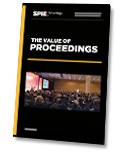
All accepted papers could be included in SPIE Proceeding (EI).
通过审核的会议投稿可以选择发表到SPIE文集(EI收录),也可以选择不发表,只参会作口头或粘贴交流。
The white paper on the value of proceedings is at The unique value of Proceedings of SPIE
Indexed and accessible
SPIE partners with relevant scientific databases to enable researchers to find Proceedings of SPIE. They are indexed in Web of Science, Scopus, Ei Compendex, Inspec, Google Scholar, Astrophysical Data System (ADS), CrossRef, and other scholarly indexes, and are widely accessible to leading research organizations, conference attendees, and individual researchers.
These journals welcome submission of journal-ready manuscripts that are derived from conference papers, as appropriate for each journal.
See the SPIE policy on submission of manuscripts derived from conference papers.
Distinction between proceedings and journal papers:
Conference proceedings provide a vehicle for rapid reporting of ideas, techniques, and results. It is not uncommon for these reports to be somewhat incomplete and inconclusive. The purposes of proceedings papers range from snapshots of recent or continuing work to the reporting of a completed work or project. Journal papers are expected to be original, complete, and polished; to contain comparisons of theoretical and experimental results; and to include substantial conclusions and comprehensive references to other work.
SPIE publication policy permits manuscripts based partly or entirely on scientific content previously reported in SPIE proceedings to be submitted to SPIE journals. Furthermore, SPIE permits manuscripts based partly or entirely on scientific content previously reported in a non-SPIE conference to be submitted to SPIE journals so long as the copyright policies of the non-SPIE conference are properly adhered to (see below). In most cases, it is anticipated that the journal submission will represent a substantively expanded, refined, or otherwise revised manuscript relative to the proceedings paper to fully satisfy the standards of significance, originality, and presentation quality expected in a journal submission that is being considered for acceptance through the journal peer-review process. A manuscript submitted to an SPIE journal that incorporates minimal or no revisions over a prior or concurrent SPIE proceedings paper may be considered for publication in an SPIE journal and admitted into the peer-review process provided the submission fulfills the requirements of significance, originality, and completeness expected in a journal submission. SPIE does not consider publication of an accepted journal article based on a prior proceedings paper to constitute double publication.
SPIE copyright policy permits authors to submit derivations of their proceedings papers to their journal of choice. Submissions to SPIE journals are permissible provided the other expectations described herein are satisfied. Authors submitting to journals published by other publishers should verify that publisher's copyright and submission policies. Authors wishing to submit papers that were presented at or published in a conference proceedings sponsored by organizations other than SPIE are responsible for adhering to the copyright policies related to that presentation or publication and are expected to disclose the prior presentation or publication history of the submission.
All proceedings manuscripts submitted to an SPIE journal must be prepared according to the guidelines provided here.
See more information at:
https://spie.org/publications/spie-journals
Cooperative Journals
如果您希望发表到下列期刊,请点击期刊名称,将全文上传到期刊官网,备注OMTA会议投稿,由期刊编辑组织审核。同一篇文章不能同时发表在SPIE文集和期刊上。
Acta Photonica Sinica (EI) 光子学报(中文EI)
Acta Energiae Solaris Sinica (EI) 太阳能学报(中文EI)
Chinese Journal of Luminescence (EI) 发光学报(中文EI)
Chinese Optics (EI) 中国光学(中文EI)
Acta Laser Biology Sinica 激光生物学报(科技核心)
Solar Energy 太阳能
 会议日程
会议日程Program at a Glance
|
Tuesday Oct. 20 |
Wednesday Oct. 21 |
Thursday Oct. 22 |
|
| Registration | 12: 00-18: 00 | 07: 30-18: 00 | |
| Workshop: AI for Photonics and Photonics for AI |
13: 30-17: 00 | ||
| Opening Ceremony | 08: 30-08: 50 | ||
| Plenary Session | 08: 50-12: 00 | ||
|
Conf.1: Optical Communication |
13: 30-15: 20 | 10: 10-12: 00 14: 00-15: 20 |
|
| Conf.2: Advanced Sensing | 15: 30-18: 00 | 08: 30-10: 00 15: 30-18: 00 |
|
| Conf.3: Lighting and Display | 15: 30-18: 00 | 08: 30-10: 00 | |
| Conf.4: Optical Storage | 13: 30-15: 20 | 10: 10-12: 00 14: 00-15: 20 |
|
| Conf.5: Energy Optoelectronics | 13: 30-15: 20 | 10: 10-12: 00 14: 00-18: 00 |
|
| Conf.6: Biophotonics and Bioelectronics |
13: 30-15: 20 | 10: 10-12: 00 14: 00-15: 20 |
|
|
Conf.7: Petahertz Communications |
15: 30-18: 00 | 08: 30-10: 00 15: 30-18: 00 |
|
|
Conf.8: Carbon based Electronic |
15: 30-18: 00 | 08: 30-10: 00 | |
| Poster Session | 13:00-14:00 | ||
| Exhibition | 08: 30-18:00 | 08: 30-18:00 |
Full Program
![]() OMAT2020 Full Program-20201010.pdf
OMAT2020 Full Program-20201010.pdf
Please note that any changes will be subject to the final notification by the conference organizers onsite.
Speaker Preparation
All presenters should check in at the corresponding session room at least 30 minutes prior to their scheduled talk to upload and check their presentation.
Poster Preparation
Authors should prepare their poster before the poster session starts. The poster must not exceed the boundaries of the display board. Authors are required to be standing by their poster for the duration of their allocated session to answer questions and further discuss their work with attendees.
Recommended Poster Size: 0.8m (Width) * 0.9m (Height)
Set-up Time: 13:30–18:00, Oct. 20
Tear-down Time: 16:00–18:00, Oct. 22
Poster Template:
![]() OMTA2020 Poster Template-80cmx90cm.pptx
OMTA2020 Poster Template-80cmx90cm.pptx
 会议注册
会议注册For attendees residing within mainland China:
https://b2b.csoe.org.cn/registration/OMTA2020.html
For attendees residing outside mainland China:
https://b2b.csoe.org.cn/registration/OMTA2020_en.html
Registration Fee
| Type | Registration Fee |
|---|---|
| Regular Registration | RMB 2600 |
| Student Registration | RMB 2000 |
Registration Includes:
- Admission to all sessions, plenaries, poster sessions and exhibition.
- Lunches, dinners and coffee breaks during the conference.
- Conference program book and technical digest.
* Full-time students (graduate and undergraduate) are required to present valid student identification when they pick up their registration materials. Post-docs are not included.
Payment
Pay Online: bank transfer, Alipay and Wechat.
Pay On-site: Cash, credit card, Alipay and Wechat are available.
a) 提前汇款:
电汇账户:中国光学工程学会
账号:0200296409200177730
开户行:工行北京科技园支行
附言备注项:OMTA+参会人姓名
b)在线支付:注册完成后,可跳转到在线支付页面,选择“支付宝”在线完成支付。
c) 现场交费:现金,刷卡,支付宝均可。
 会员申请
会员申请 企业赞助
企业赞助 下载文件
下载文件 Workshop
Workshop 交通住宿
交通住宿
Venue & Hotel
Holiday Inn Nanjing Aqua City, No.1 Jiankang Road, Qinhuai District, Nanjing, Jiangsu, China 南京秦淮区水游城假日酒店 (https://hotels.ctrip.com/hotel/dianping/61451.html).
Room Price: 500RMB.
Room Reservation: Please Contact Ms. Li, 15358191828
Transportation
Lukou International Airport: 39.5 km, Metro Line S1 (Nanjing South Railway Station) -> Line 3 (Fuzimiao)
Nanjing South Railway Station: 9.35 km, Line 3 (Fuzimiao)
Nanjing Railway Station: 9.73 km, Line 1 (Sanshanjie)
Fuzimiao Metro Station: 680m
Sanshanjie Metro Station: 810m
24 hours in Nanjing (http://english.nanjing.gov.cn/tour)
Kick-start your day with a hearty breakfast at Yinnianjin, one of the locals' favorites for steamed dumplings. Each basket ceight hot and adorable meaty pockets with boiling broth hidden inside. Breakfast's calories can be burned off with a stroll to nearby Xuanwu Lake. The massive park has a breathtaking landscape and a buzzing morning exercise scene. There is a section of well-protected Ming City Wall next to the lake. At Taicheng, visitors can walk atop the 600-year-old fortification and gain an impressive perspective over Xuanwu Lake or a striking view of Nanjing's growing skyline.

Mid-day
The Sun Yat-sen Mausoleum is just a subway ride away from Xuanwu Lake. The metro station is right outside the main park gate, and the Muxuyuan (苜蓿园) station on Line 2 is the nearest stop to the spectacular memorial. The Nanjing Impressions restaurant near the Muxuyuan station is a great pit stop to build energy for the long walk ahead. The Republic of China-themed space features staff in period costume, an open kitchen and plate after plate of mouth-watering local fare. A shuttle bus links the metro station to the mausoleum, which is set in an incredible natural environment. You can enjoy lush forest on the way up, and after climbing the 392 stairs leading to the coffin chamber at the top, you will be rewarded with a stunning view over the Zijin Mountain.

Nanjing Impressions, No.2, Lingyuan Rd, near Sun Yat-sen Mausoleum, Xuanwu District Sun Yat-sen's Mausoleum, Zhongshan Scenic Area,Qixia District
Afternoon
Another major attraction during the Republic of China is the President Palace, which is a 10-minute walk from Daxinggong station (大行宫) on Metro Line 2. The former Kuomintang offices and the artistic gardens are kept in their original state from the 1940s. To dig deeper into the city's dramatic history, zip westwards to The Memorial Hall of the Victims of the Nanjing Massacre. Take a moment to commemorate the 300,000 victims of a six-week killing spree by the Japanese soldiers in December 1937.
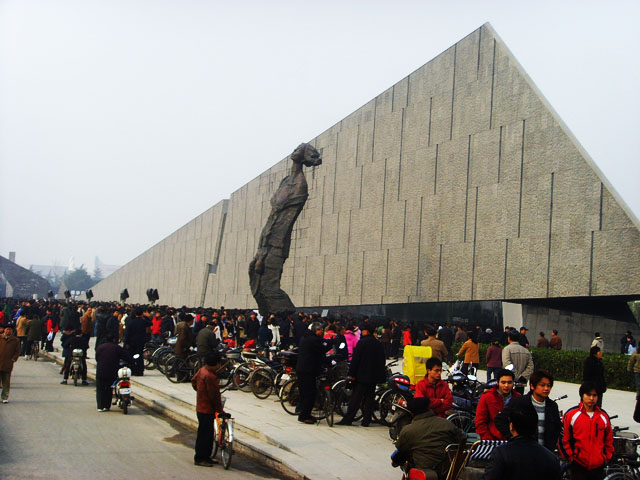
Presidential Palace, No.292,Changjiang Rd, Xuanwu District Memorial Hall of Victims of the Nanjing Massacre, No.418,Shuiximen St, Jianye District.
Evening
Xinjiekou, the city's equivalent to Times Square, is a perfect spot to feel the glitz and glamour of modern Nanjing when the night falls. The blinding intersection is surrounded by luxury brand stores, gigantic shopping malls and towering five-star hotels. Underneath, there is another labyrinth of subway stalls stretching for miles, selling the hottest eats and knick-knacks. One of the best places to dine in Xinjiekou is the Plum Garden restaurant in Jinling Hotel. The elegant space serves the city's best salted duck.
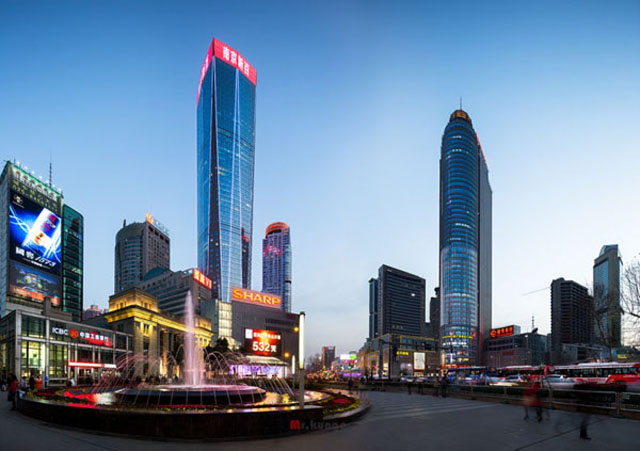
Xinjiekou, intersection of Hanzhong Road and Zhongshan Road Plum Garden (梅苑), 2/F, Jinling Hotel, No.2 Hanzhong Road, Gulou District.
Night
The night market at Fuzi Miao, or the CTemple, provides the ultimate experience of Chinese folklore, especially around any Chinese festivals. It's a great choice for an after-dinner walk with mind-blowing neon signs, local crafts and a never-ending sea of tourists. As the Fuzi Miao bustle dies down, nightlife on Shanghai Road or in the 1912 complex is just beginning. These are the two main bar areas. The Shanghai Road neighborhood has a variety of venues from sports bar to underground live house while 1912 leans towards disco clubbing. Round off the night (or embrace the dawn)by singing a few numbers at a KTV parlor, which is a typical way for Nanjingers to spend a wild night with friends.
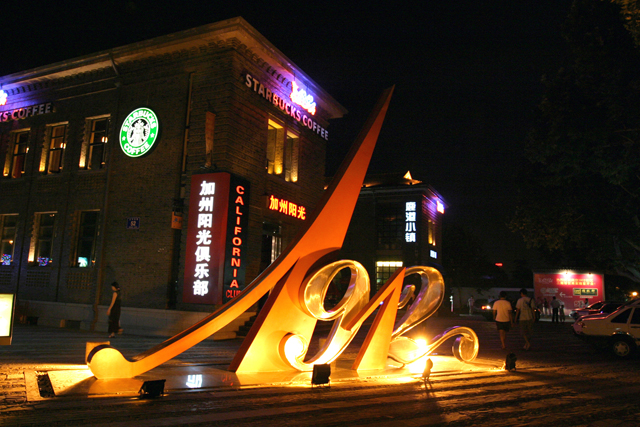
Fuzi Miao, Metro Line 1 SanshanJie Station, Qinhuai District.
 往届回顾
往届回顾2016: https://www.csoe.org.cn/omta2016/
2019: https://b2b.csoe.org.cn/meeting/show-58.html
 联系方式
联系方式Jie Zhang, zhangjie@csoe.org.cn, 86-22-58168510
Exhibition & Sponsorship:
Sheng Guo, guosheng@csoe.org.cn, 86-10-83739883
Qiuwei Shao, shaoqw@csoe.org.cn, 86-15501263970